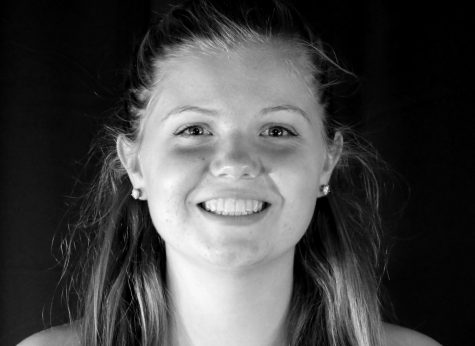Playmaker Profile: Collide A Scope
lleana Knapp ’19 has found her niche on the roller derby track
December 21, 2017
Three years ago, Ileana Knapp ‘19, known by her teammates as “Collide a Scope”, discovered something that her father believes saved her life. That something was Roller Derby.
“My therapist actually brought me in. I was in a really dark spot, I was depressed, it wasn’t going well. This league started, and it was viewed as an outlet and a safe space for kids who didn’t quite fit in anywhere else,” Knapp said.
Each game of derby, called a “bout,” is played between two teams, each with five players in a lineup at one time on the track. Each lineup is made up of one pivot—designated with a helmet stripe, three blockers, and a jammer—designated with a helmet star.
Every passed hip earns a point, except for the initial pass through the pack. If a player passes the other team’s jammer during their lap, it’s called a grand slam and earns five points, as opposed to four. Whichever team with the most points after two half hour quarters, wins the bout.
First played in Chicago in 1935, the sport has long been known to encourage the adoption of alternative on-track personas. A popular physical method of doing so is through the use of Derby names.
“You can pick your name and your number. My number is my address because it’s easy for me to remember. Your name can be anything you want. I went with Collide a Scope, because it’s more of a word play, and I actually got it from my sister back when she was younger and wanted to do Roller Derby.”
If a skater doesn’t pick a Derby name, Knapp’s coach will assign them one.
“Molasses is Molasses because it takes so long to get her up.”
Knapp typically skates under a pivot, which means it is her job to take charge on the track. The pivot faces backwards, Derby direction; communicates where the other team’s jammer is to help their wall, and braces where the jammer is impacting.
“I put skaters where they need to go. You need to be able to communicate and keep a level head if your team isn’t doing what you need them to do. Because if we’re not working together and communicating then it isn’t a wall, and it doesn’t work terribly well.”
Knapp skates for the IC Bruisers, a junior roller derby team with skaters from ages 4-17. IC Bruisers is the only free roller derby league in the world. The Bruisers consist of three age ranges: the bug bites, the black hard bruisers, and the Misfits, which Knapp is a part of. The Misfits practice five hours a week.
“Typical practice we start with warm-ups, transitions, warm-up sprints, and then depending on the mood of our coach, we do more sprints. Planks normally come if we’re not communicating or we’re not walling up fast enough. We talk about strategy and our walls too. After a game we talk about what we did and what we could do better to improve for next time.”
When the Misfits are in season, they usually have tournaments every weekend. In the past they’ve travelled to South Dakota; Topeka, Kansas; Council Bluffs; Indiana; Omaha; Quad Cities; Minneapolis; Illinois; and potentially a tournament in Texas.
With all of the time Knapp and her team spend together, they have formed a unit resembling a family. Because of her experience and leadership role as the Pivot, Knapp often finds herself in a motherly position towards her younger teammates. To protect her “children” in the highly physical sport of roller derby, Knapp uses a strategy of controlled aggression.
“If you can hit somebody, like a smaller skater, what you want to do is hook them and lean them off the track rather than just sending them flying. So it’s aggressive to a point I’d say. You definitely have to be okay with hitting people.”

































